Integrated transcriptome and hormone profiling highlight the role of multiple phytohormone pathways in wheat resistance against fusarium head blight
- PMID: 30403737
- PMCID: PMC6221353
- DOI: 10.1371/journal.pone.0207036
Integrated transcriptome and hormone profiling highlight the role of multiple phytohormone pathways in wheat resistance against fusarium head blight
Abstract
Fusarium head blight (FHB or scab) caused by Fusarium spp. is a destructive disease of wheat. Since the most effective sources of FHB resistance are typically associated with unfavorable agronomic traits, breeding commercial cultivars that combine desired agronomic traits and a high level of FHB resistance remains a considerable challenge. A better understanding of the molecular mechanisms governing FHB resistance will help to design more efficient and precise breeding strategies. Here, multiple molecular tools and assays were deployed to compare the resistant variety Sumai3 with three regionally adapted Canadian cultivars. Macroscopic and microscopic disease evaluation established the relative level of Type II FHB resistance of the four varieties and revealed that the F. graminearum infection process displayed substantial temporal differences among organs. The rachis was found to play a critical role in preventing F. graminearum spread within spikes. Large-scale, organ-specific RNA-seq at different times after F. graminearum infection demonstrated that diverse defense mechanisms were expressed faster and more intensely in the spikelet of resistant varieties. The roles of plant hormones during the interaction of wheat with F. graminearum was inferred based on the transcriptomic data obtained and the quantification of the major plant hormones. Salicylic acid and jasmonic acid were found to play predominantly positive roles in FHB resistance, whereas auxin and ABA were associated with susceptibility, and ethylene appeared to play a dual role during the interaction with F graminearum.
Conflict of interest statement
The authors have declared that no competing interests exist.
Figures
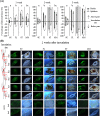

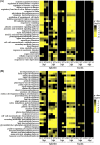

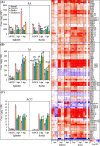
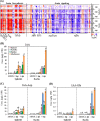
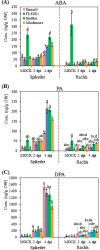
Similar articles
-
Exogenous Abscisic Acid and Gibberellic Acid Elicit Opposing Effects on Fusarium graminearum Infection in Wheat.Phytopathology. 2016 Sep;106(9):986-96. doi: 10.1094/PHYTO-01-16-0033-R. Epub 2016 Jun 17. Phytopathology. 2016. PMID: 27135677
-
Jasmonate and ethylene dependent defence gene expression and suppression of fungal virulence factors: two essential mechanisms of Fusarium head blight resistance in wheat?BMC Genomics. 2012 Aug 2;13:369. doi: 10.1186/1471-2164-13-369. BMC Genomics. 2012. PMID: 22857656 Free PMC article.
-
Salicylic acid regulates basal resistance to Fusarium head blight in wheat.Mol Plant Microbe Interact. 2012 Mar;25(3):431-9. doi: 10.1094/MPMI-09-11-0232. Mol Plant Microbe Interact. 2012. PMID: 22112217
-
The Role of Plant Hormones in the Interaction of Colletotrichum Species with Their Host Plants.Int J Mol Sci. 2021 Nov 18;22(22):12454. doi: 10.3390/ijms222212454. Int J Mol Sci. 2021. PMID: 34830343 Free PMC article. Review.
-
Linking Multi-Omics to Wheat Resistance Types to Fusarium Head Blight to Reveal the Underlying Mechanisms.Int J Mol Sci. 2022 Feb 18;23(4):2280. doi: 10.3390/ijms23042280. Int J Mol Sci. 2022. PMID: 35216395 Free PMC article. Review.
Cited by
-
Untargeted Metabolomics Reveals a Multi-Faceted Resistance Response to Fusarium Head Blight Mediated by the Thinopyrum elongatum Fhb7E Locus Transferred via Chromosome Engineering into Wheat.Cells. 2023 Apr 8;12(8):1113. doi: 10.3390/cells12081113. Cells. 2023. PMID: 37190021 Free PMC article.
-
Transcriptome analysis reveals underlying immune response mechanism of fungal (Penicillium oxalicum) disease in Gastrodia elata Bl. f. glauca S. chow (Orchidaceae).BMC Plant Biol. 2020 Sep 29;20(1):445. doi: 10.1186/s12870-020-02653-4. BMC Plant Biol. 2020. PMID: 32993485 Free PMC article.
-
Proteomics-Based Data Integration of Wheat Cultivars Facing Fusarium graminearum Strains Revealed a Core-Responsive Pattern Controlling Fusarium Head Blight.Front Plant Sci. 2021 May 31;12:644810. doi: 10.3389/fpls.2021.644810. eCollection 2021. Front Plant Sci. 2021. PMID: 34135919 Free PMC article.
-
The Black Necrotic Lesion Enhanced Fusarium graminearum Resistance in Wheat.Front Plant Sci. 2022 Jun 30;13:926621. doi: 10.3389/fpls.2022.926621. eCollection 2022. Front Plant Sci. 2022. PMID: 35845685 Free PMC article.
-
Transcript Dynamics in Wounded and Inoculated Scots Pine.Int J Mol Sci. 2021 Feb 3;22(4):1505. doi: 10.3390/ijms22041505. Int J Mol Sci. 2021. PMID: 33546141 Free PMC article.
References
-
- Jansen C, von Wettstein D, Schafer W, Kogel KH, Felk A, Maier FJ. Infection patterns in barley and wheat spikes inoculated with wild-type and trichodiene synthase gene disrupted Fusarium graminearum. Proc Natl Acad Sci U S A. 2005;102(46):16892–7. Epub 2005/11/03. 10.1073/pnas.0508467102 ; PubMed Central PMCID: PMCPMC1283850. - DOI - PMC - PubMed
Publication types
MeSH terms
Substances
LinkOut - more resources
Full Text Sources
Molecular Biology Databases
Miscellaneous

